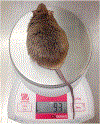Hepatotoxicity due to herbal dietary supplements: Past, present and the future
- PMID: 36183923
- PMCID: PMC11404749
- DOI: 10.1016/j.fct.2022.113445
Hepatotoxicity due to herbal dietary supplements: Past, present and the future
Abstract
Dietary supplements (DS) constitute a widely used group of products comprising vitamin, mineral, and botanical extract formulations. DS of botanical or herbal origins (HDS) comprise nearly 30% of all DS and are presented on the market either as single plant extracts or multi-extract-containing products. Despite generally safe toxicological profiles of most products currently present on the market, rising cases of liver injury caused by HDS - mostly by multi-ingredient and adulterated products - are of particular concern. Here we discuss the most prominent historical cases of HDS-induced hepatotoxicty - from Ephedra to Hydroxycut and OxyELITE Pro-NF, as well as products with suspected hepatotoxicity that are either currently on or are entering the market. We further provide discussion on overcoming the existing challenges with HDS-linked hepatotoxicity by introduction of advanced in silico, in vitro, in vivo, and microphysiological system approaches to address the matter of safety of those products before they reach the market.
Keywords: Botanicals; Dietary supplements; Hepatotoxicity; Microphysiological system; Phytochemicals; Safety assessment.
Copyright © 2022 Elsevier Ltd. All rights reserved.
Conflict of interest statement
Declaration of competing interest The authors declare that they have no known competing financial interests or personal relationships that could have appeared to influence the work reported in this paper.
Figures


References
Publication types
MeSH terms
Substances
Grants and funding
LinkOut - more resources
Full Text Sources
Medical
Miscellaneous

